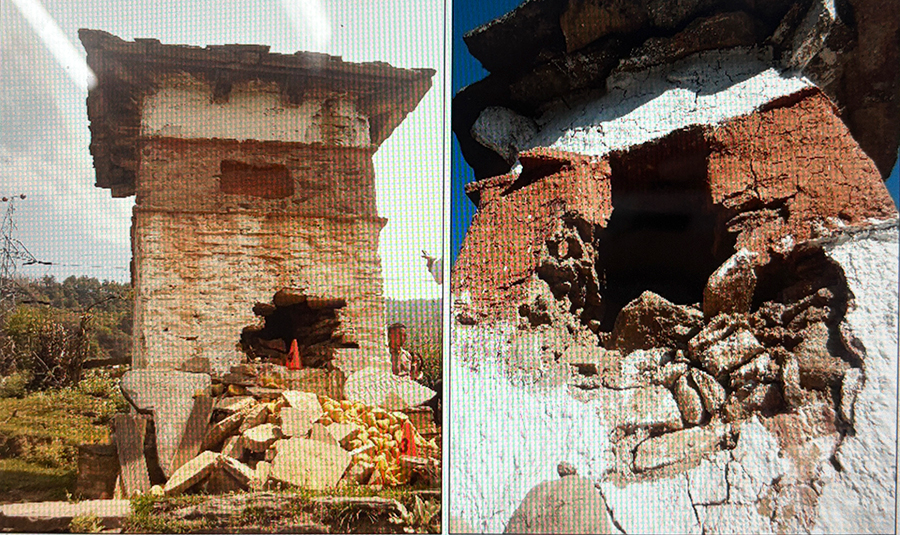 In the last ten years, over 700 cases of chorten and lhakhang vandalism have been reported. The Royal Bhutan Police said remote locations, poor reporting, high unemployment, and weak antique management are key challenges. To strengthen security, a new committee led by the Home Secretary under the Ministry of Home Affairs will be formed, including the Royal Bhutan Police, Department of Culture, Central Monastic Body, and local governments. This committee will coordinate efforts, clarify responsibilities, and raise awareness to prevent future vandalism.
In the last ten years, over 700 cases of chorten and lhakhang vandalism have been reported. The Royal Bhutan Police said remote locations, poor reporting, high unemployment, and weak antique management are key challenges. To strengthen security, a new committee led by the Home Secretary under the Ministry of Home Affairs will be formed, including the Royal Bhutan Police, Department of Culture, Central Monastic Body, and local governments. This committee will coordinate efforts, clarify responsibilities, and raise awareness to prevent future vandalism.
The police say there is a lack of clarity among relevant stakeholders regarding their roles in protecting the chorten and lhakhangs in the country.
Once formed, the committee will categorise chorten and lhakhang based on importance and secure them accordingly.
As an immediate measure, the police suggested installing CCTVs. For long-term security, they proposed salaries for caretakers, better lock systems, and using strong and more durable materials for chortens and Lhakhang constructions.
The highest number of vandalism cases was recorded in 2017, with nearly 135 reported incidents, followed by over 130 cases in 2015.
The cases declined in 2018 and 2019 with more than 80 cases each year.
From 2020 to 2024, reported cases remained relatively stable, ranging between 50 and 55, except in 2021, when cases dropped to 36. So far, this year, four cases have been reported.
According to RBP’s data, eastern districts reported the highest vandalism cases. Monggar recorded the highest with more than 140 cases, followed by Trashigang with 100 cases in the last ten years.
Between 2012 and 2024, more than 280 have been convicted in connection to chorten and lhakhang vandalism.
Under the Penal Code of Bhutan, the offence against the Ku Sung Thukten or Zung is a first-degree felony with 15 years to life imprisonment.
Sonam Yuden & Tashi Dekar
Edited by Sonam Pem







